Red Light Therapy Enhances Speed, Strength and Athletic Performance
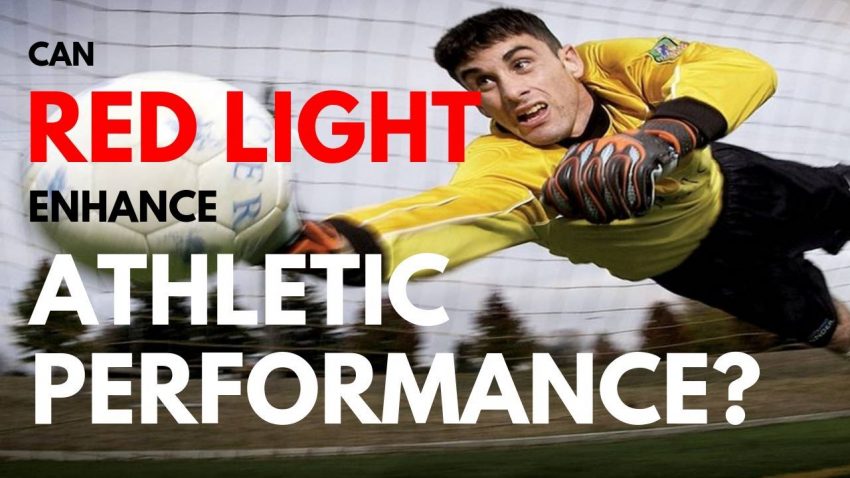
Do you wish you could boost your physical speed, strength and enhance performance to get the edge on your competition in whatever sport you play?
What if there was a type of athletic performance enhancing substance that was similar and in some ways better than steroids at boosting performance, yet couldn’t be detected on any test? Well that substance does exist, it’s red and near-infrared light therapies.
In this video/article/podcast/presentation you’re going to learn how near-infrared and red light therapies before exercise can enhance every aspect of your physical performance including strength, speed, endurance, muscle size, and overall athletic performance.
Red light therapy is so effective at athletic performance enhancement that in recent years, athletic associations worldwide have considered banning it, calling it “light doping.”
I hope you enjoy this presentation and in some way however large or small it makes your life better.
(Click here to watch on YouTube)
TABLE OF CONTENTS
Introduction
A friend of mine who I used to work with played a single professional hockey game in the NHL before suffering a career-ending injury to his achilles tendon. When asked about steroid use in professional hockey, he responded “If taking steroids was the difference between becoming professional and not, would you?”
Indeed performance enhancing substances will always be used by people looking to get the edge, and this is where knowledge becomes power. If you don’t know about a substance that significantly makes you a better athlete then you won’t use it. Let’s take a look at what red light therapy can do for physical and athletic performance in various sports.
We’re going to start by looking at what red light therapy can do for elite cyclists, professional futsal players and runners.
Exercise Endurance Improved by Red Light Therapy
Cycling Endurance Improved with Red Light
In 2018, scientists administered red light to cyclists before exercise and tested their performance. The study found that red light therapy “increased time to exhaustion in competitive cyclists, suggesting this intervention as a possible non-pharmacological ergogenic agent in cycling.”[1]
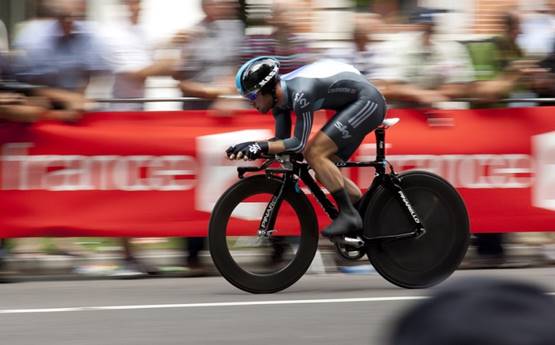
In a follow-up study by the same group of researchers, red light therapy was found to “decreases O2 deficit during time-to-exhaustion tests in competitive cyclists, and these changes in VO2 kinetics response can be one of the possible mechanisms to explain the ergogenic effect induced by light therapy.”[2]
Professional Futsal Performance Improved with Red Light
Futsal is an indoor variation of international soccer that’s played on a smaller field, with a rapid back-and-forth pace similar to basketball or hockey. Playing at the professional level requires extraordinary endurance.
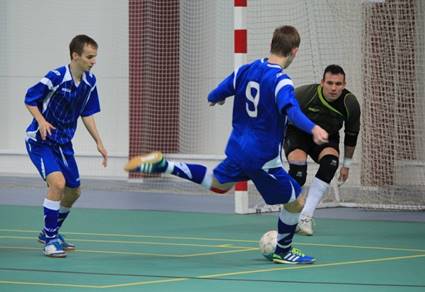
In 2018, Brazilian researchers conducted a randomized, triple-blinded, placebo-controlled trial to analyze the effects of red light therapy treatments on professional futsal players. Players were treated with red light therapy or placebo before matches.
The results showed that players who received red light were able to stay on the field much longer. The study concluded that light therapy “significantly increased the time of staying in the pitch and had a significant improvement in all the biochemical markers evaluated…pre-exercise therapy can enhance performance and accelerate recovery of high-level futsal players.”[3]
Improved Endurance in Runners using Red Light Therapy
Red light therapy was tested on healthy men and women going through endurance training on treadmills in a triple-blind, placebo-controlled trial in 2018.
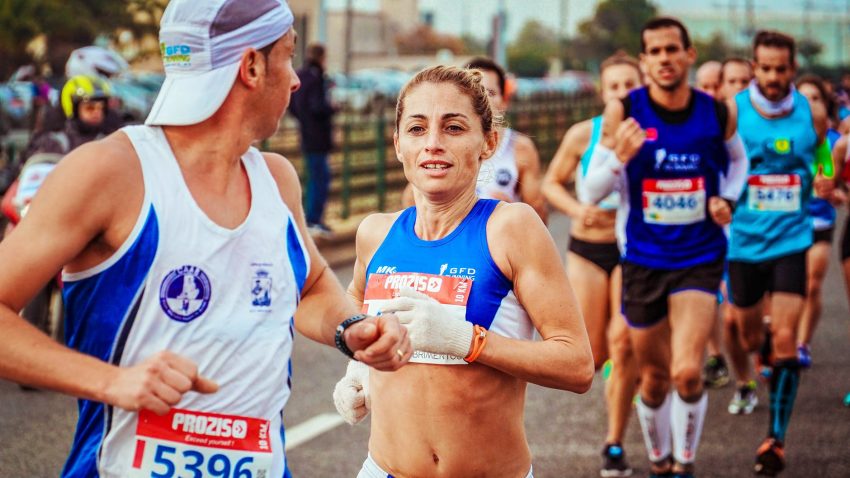
77 healthy volunteers received red light therapy before and/or after each training session in a 12 week treadmill-training protocol, 3 sessions per week.
Using red light therapy before exercise can “increase the time-to-exhaustion and oxygen uptake and also decrease the body fat in healthy volunteers when compared to placebo.” The study concluded that red light therapy “applied before and after endurance-training exercise sessions lead to improvement of endurance three times faster than exercise only.”[4]
Red Light Therapy Increases Speed and Strength
Witness the remarkable finding that red light can improve sprinting times in rugby players, and how the strength and overall muscle performance is increased in athletes of all kinds.
The effects of red light on the sprint performance of professional rugby players was tested in a randomized, crossover, double-blinded, placebo-controlled trial in 2016.
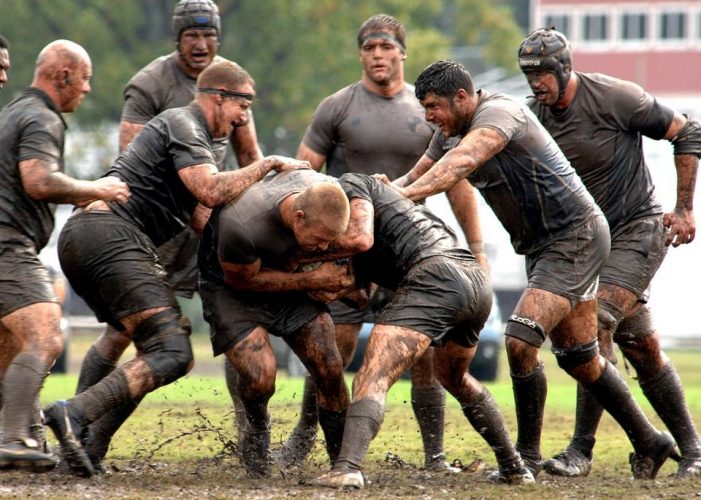
The group of athletes received either red + near-infrared light or placebo before taking the Bangsbo Sprint Test on the training field and the results were analyzed.
The study found that the light therapy resulted in faster running and improved recovery in the athletes. Light therapy “significantly improved the average time of sprints,” wrote the team of researchers.[5]
In 2015, researchers conducted a review of the existing research on the use of red and near-infrared light for muscle performance.
The time until exhaustion and the number of reps performed following light therapy were dramatically increased, they wrote.
“The time until exhaustion increased significantly compared to placebo by 4.12s and the number of repetitions increased by 5.47 after phototherapy.”
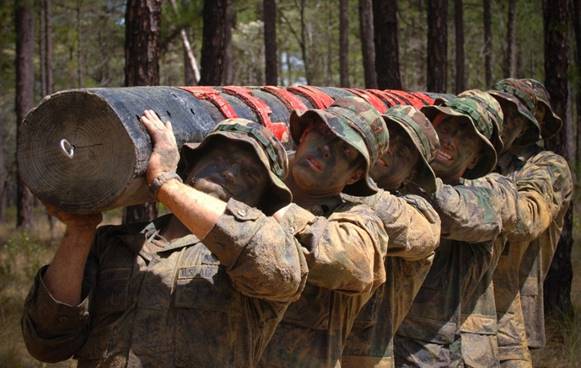
“We conclude that phototherapy (with lasers and LEDs) improves muscular performance and accelerates recovery mainly when applied before exercise.”[6]
A 2016 review and meta analysis looked at all existing studies on the effects of red light on muscle performance and overall exercise capacity.
Parameters investigated included number of repetitions, time to exhaustion, blood lactate concentration and lactate dehydrogenase activity. Muscle performance parameters included torque, power and strength. Sixteen studies involving 297 participants were included.
Red light therapy before exercise resulted in:
- Reduced lactate levels
- Increased peak torque
- Increased repetitions by 3.51 repetitions
- Increased time until exhaustion by 4.01 s[7]
Red Light Therapy Reduces Muscle Damage
Red Light Reduces Muscle Damage in High-Level Soccer Athletes
Researchers from Brazil and Norway conducted a trial on pre-exercise performance and post-exercise recovery of 28 high-level soccer athletes in 2016.
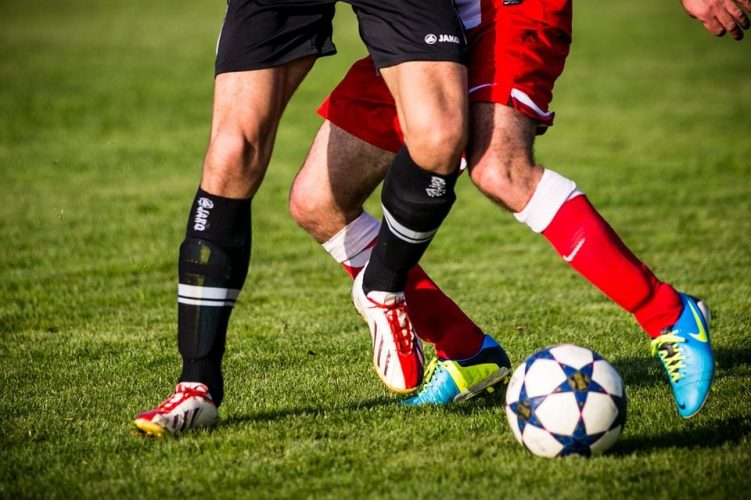
Since the benefits on performance have already been established, their goal was to find the optimal dose of 810nm near-infrared light applied to muscle that would give the greatest performance enhancement.
LLLT was applied before eccentric exercise protocol with a cluster with five diodes, and dose of 10, 30, or 50 J (200 mW and 810 nm) in six sites of quadriceps.
“Pre-exercise LLLT, mainly with 50 J dose, significantly increases performance and improves biochemical markers related to skeletal muscle damage and inflammation.”[8]
Red Light Reduces Damage in Professional Volleyball Players
A 2015 Brazilian randomized double-blind placebo controlled trial applied red and near-infrared light to the quadriceps muscles, hamstrings and triceps of 12 professional volleyball players before official matches to find out if it could prevent muscle damage.
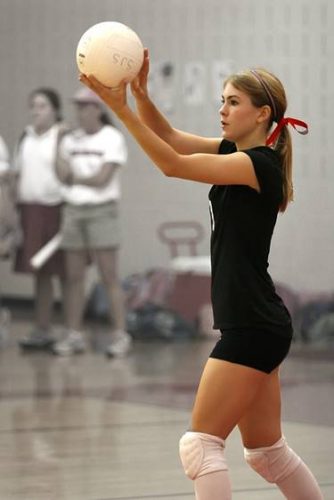
Volleyball players were divided into four groups:
- Group 1: 105 Joules
- Group 2: 210 Joules
- Group 3: 315 Joules
- Group 4: None
While the placebo and 105J groups had significant muscle damage, as evidenced by significant increases in creatine kinase measured 24 hours after competition, the 210J and 315J groups had little muscle damage and little increases of creatine kinase, “suggesting athletes might consider applying LEDT before competition.”[9]
Red Light Speeds Recovery of Injuries
A 2014 review looked at 17 studies on the effects of red light therapy on skeletal muscle repair for the treatment of muscle injuries.
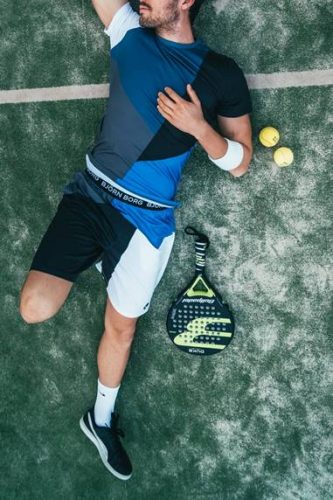
“The main effects of LLLT were a reduction in the inflammatory process, the modulation of growth factors and myogenic regulatory factors, and increased angiogenesis.”
The studies analyzed demonstrate the positive effects of red light on the muscle repair process.
“The findings suggest that LLLT is an excellent therapeutic resource for the treatment of skeletal muscle injuries.”[10]
Conclusions
It’s clear from the research that red light therapy can improve virtually all aspects of physical performance known. The only question is whether or not athletic associations are going to try and ban it in time. Only time will tell. Either way, you can take advantage of the remarkable athletic performance enhancement that it provides today.
The benefits of red light therapy for athletic performance enhancement include:
- Increased Speed
- Increased Strength
- Increased Endurance
- Increased Repetitions
- Increased Time Until Exhaustion
- Reduced Lactate
- Reduced Muscle Damage
- Reduced Risk of Injury
- Accelerated Recovery from Injury
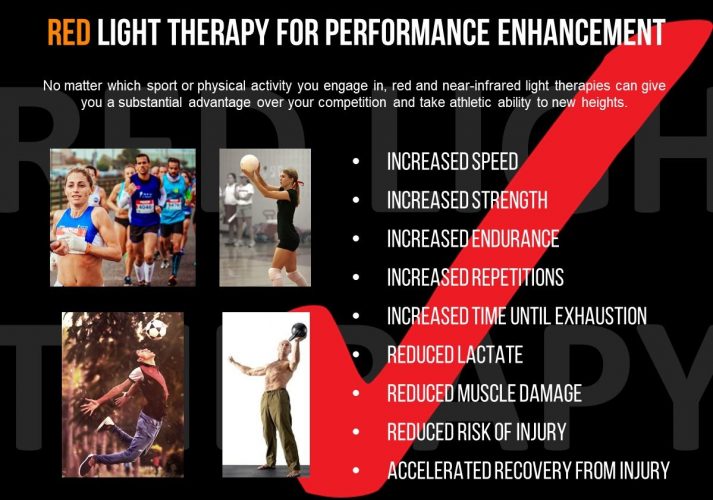
If you want to learn more about red light therapy, check out my bestselling book on red light therapy Red Light Therapy: Miracle Medicine on Amazon, the world’s biggest and best book store.
References
- Lanferdini FJ, Bini RR, et al. Improvement of Performance and Reduction of Fatigue With Low-Level Laser Therapy in Competitive Cyclists. International Journal of Sports Physiology and Performance. 2018 Jan 1;13(1):14-22.
https://www.ncbi.nlm.nih.gov/pubmed/28422520 - Lanferdini FJ, Krüger RL, et al. Low-level laser therapy improves the VO2 kinetics in competitive cyclists. Lasers in Medical Science. 2018 Apr;33(3):453-460.
https://www.ncbi.nlm.nih.gov/pubmed/29119418 - De Marchi T, Leal-Junior ECP, et al. Photobiomodulation therapy before futsal matches improves the staying time of athletes in the court and accelerates post-exercise recovery. Lasers in Medical Science. 2018 Sep 27
https://www.ncbi.nlm.nih.gov/pubmed/30264178 - When is the best moment to apply photobiomodulation therapy (PBMT) when associated to a treadmill endurance-training program? A randomized, triple-blinded, placebo-controlled clinical trial.
https://www.ncbi.nlm.nih.gov/pubmed/29185134 - Pinto HD, Vanin AA, et al. Photobiomodulation Therapy Improves Performance and Accelerates Recovery of High-Level Rugby Players in Field Test: A Randomized, Crossover, Double-Blind, Placebo-Controlled Clinical Study. Journal of Strength and Conditioning Research. 2016 Dec;30(12):3329-3338.
https://www.ncbi.nlm.nih.gov/pubmed/27050245 - Leal-junior EC, Vanin AA, Miranda EF, De carvalho Pde T, Dal corso S, Bjordal JM. Effect of phototherapy (low-level laser therapy and light-emitting diode therapy) on exercise performance and markers of exercise recovery: a systematic review with meta-analysis. Lasers Med Sci. 2015;30(2):925-39.
https://www.ncbi.nlm.nih.gov/pubmed/24249354 - Nampo FK, Cavalheri V, Dos santos soares F, De paula ramos S, Camargo EA. Low-level phototherapy to improve exercise capacity and muscle performance: a systematic review and meta-analysis. Lasers Med Sci. 2016;31(9):1957-1970.
https://www.ncbi.nlm.nih.gov/pubmed/27272746 - Aver vanin A, De marchi T, Tomazoni SS, et al. Pre-Exercise Infrared Low-Level Laser Therapy (810 nm) in Skeletal Muscle Performance and Postexercise Recovery in Humans, What Is the Optimal Dose? A Randomized, Double-Blind, Placebo-Controlled Clinical Trial. Photomed Laser Surg. 2016;34(10):473-482.
https://www.ncbi.nlm.nih.gov/pubmed/27575834 - Ferraresi C, Dos santos RV, Marques G, et al. Light-emitting diode therapy (LEDT) before matches prevents increase in creatine kinase with a light dose response in volleyball players. Lasers Med Sci. 2015;30(4):1281-7.
https://www.ncbi.nlm.nih.gov/pubmed/25722067 - Alves AN, Fernandes KP, Deana AM, Bussadori SK, Mesquita-ferrari RA. Effects of low-level laser therapy on skeletal muscle repair: a systematic review. Am J Phys Med Rehabil. 2014;93(12):1073-85.
https://www.ncbi.nlm.nih.gov/pubmed/25122099

